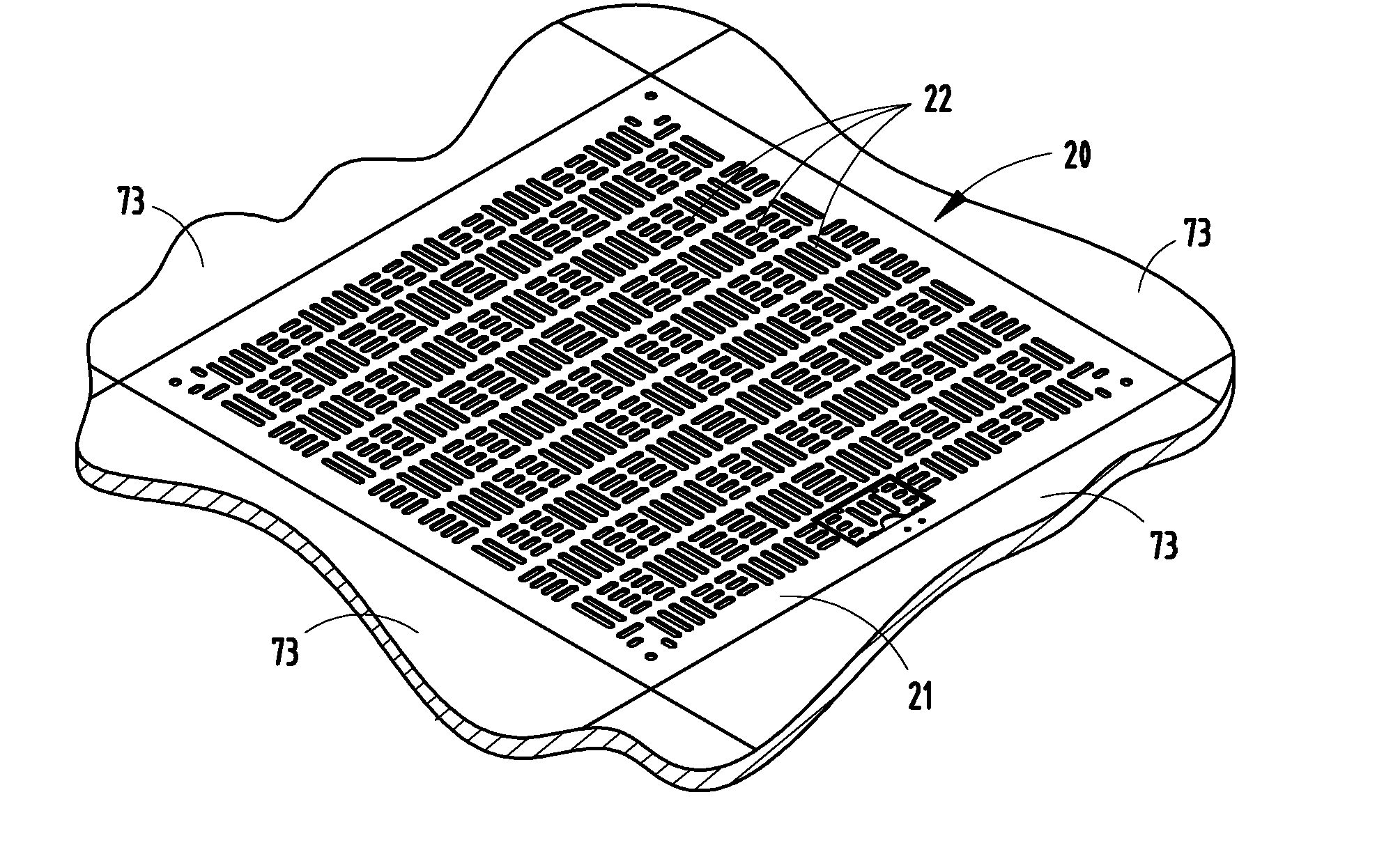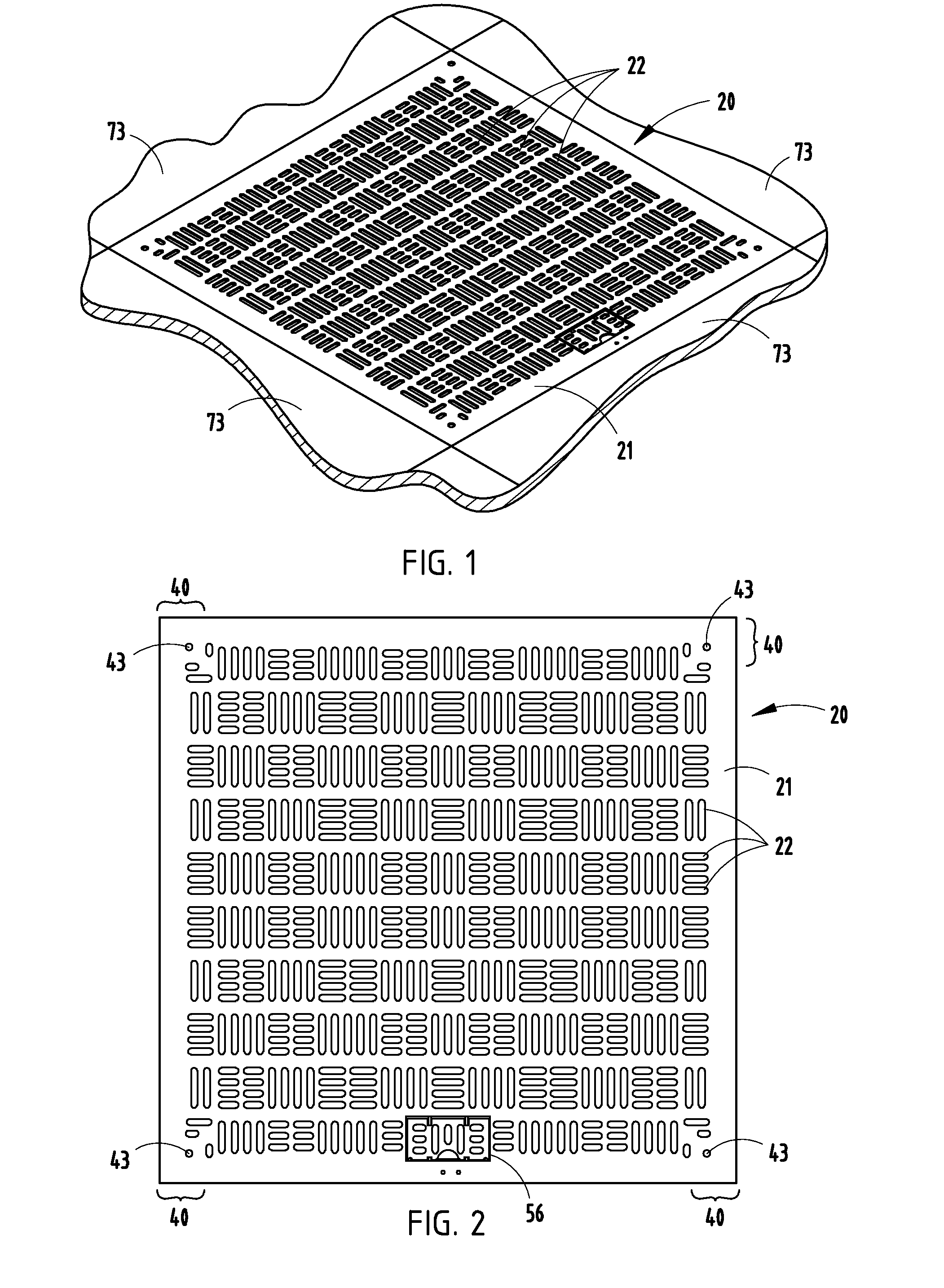Air grate for raised floors
a technology of air grate and raised floor, which is applied in ventilation systems, lighting and heating apparatus, heating types, etc., can solve problems such as uneven floor surfaces, weight, and difficulty in solving them
- Summary
- Abstract
- Description
- Claims
- Application Information
AI Technical Summary
Benefits of technology
Problems solved by technology
Method used
Image
Examples
Embodiment Construction
[0022]An air grate 20 (FIG. 1) is illustrated embodying the present invention. It is noted that specific dimensions are given to facilitate an understanding of the present invention, but that the present invention is not limited to only those dimension. The present air grate 20 is configured for use in a raised floor system as shown in FIG. 1, and includes a top plate 21 with apertures 22 for air flow, and includes a matrix of interconnected reinforcement ribs for structural support. Notably, the density of apertures 22 can be increased or decreased depending on the particular requirements of an installation. The illustrated apertures 22 provide up to about 50% open area for air flow. The illustrated ribs include perimeter ribs 23-26 (FIG. 6) of a first dimension D1 (approximately 2 inches high) welded to top plate 21, first parallel ribs 27-33 of a shorter second dimension D2 (about 1½ inches high) welded to top plate 21, and shorter second transverse parallel ribs 34 of a third di...
PUM
 Login to View More
Login to View More Abstract
Description
Claims
Application Information
 Login to View More
Login to View More - R&D
- Intellectual Property
- Life Sciences
- Materials
- Tech Scout
- Unparalleled Data Quality
- Higher Quality Content
- 60% Fewer Hallucinations
Browse by: Latest US Patents, China's latest patents, Technical Efficacy Thesaurus, Application Domain, Technology Topic, Popular Technical Reports.
© 2025 PatSnap. All rights reserved.Legal|Privacy policy|Modern Slavery Act Transparency Statement|Sitemap|About US| Contact US: help@patsnap.com



